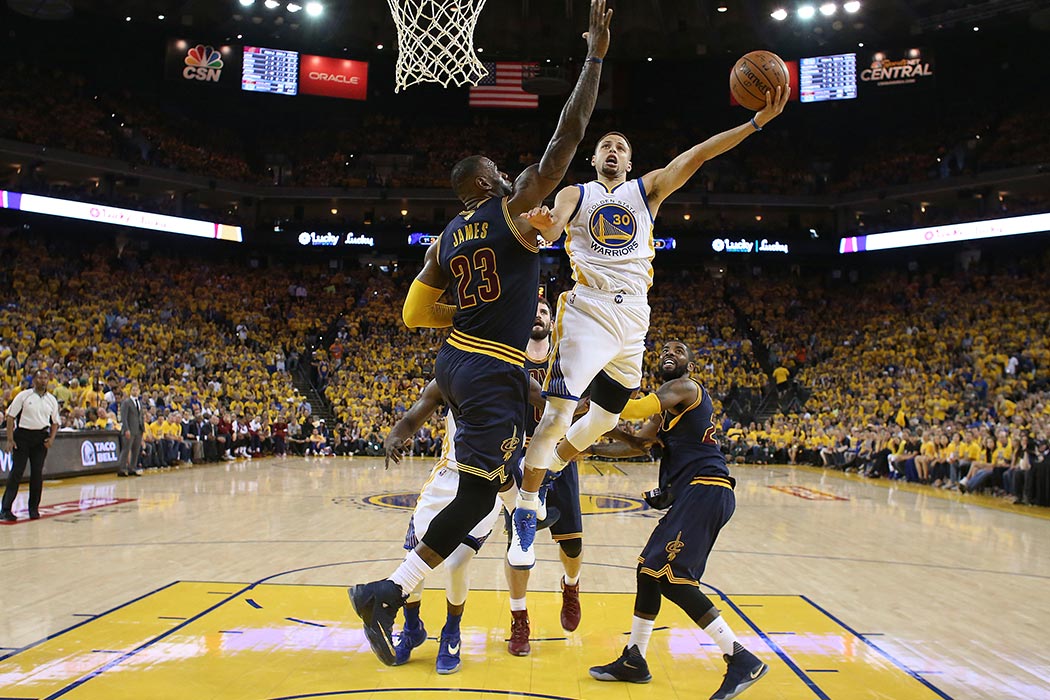While it’s the Golden State Warriors v. the Cleveland Cavaliers in this year’s NBA finals, a casual viewer might be led to believe the event is really a showdown between Stephen Curry and LeBron James. Officially, basketball remains a five-man team game, but the NBA prefers to market individuals.
That’s no accident for what has become a sporting international behemoth.
The NBA’s reach now goes deep into China, Europe, Latin America and Africa, and is seen as the first American sports league to successfully sell itself overseas. Television ratings far outdraw the NHL playoffs, its nearest seasonal competitor, and the finals routinely draw larger television audiences in the U.S. than any other pro sports events with the exception of the NFL playoffs and Super Bowl.
Yet it wasn’t too long ago that the NBA was seen as losing ground and was seriously endangered. Historian Matthew Smith traces the NBA of the late 1970s as encountering a crisis of massive social implications. In a nation becoming more conservative, the NBA faced a drug crisis, with many of its players said to be cocaine abusers. Its superstars, like Kareem Jabbar and Julius Erving, were slowly declining. And, he adds, the league was, frankly, seen as too black for the white American sporting audience.
The then owner of the pre-LeBron Cleveland Cavaliers put it bluntly: “White people need to have white heroes.” (Too bad he never lived to see those large LeBron posters all over his city).
Smith sees the emergence of Larry Bird, the Boston Celtics’ superstar, a lanky, slow-moving superb passer and shooter from rural Indiana, as the NBA savior. “The success of a white superstar changed the NBA,” he writes. Bird re-energized a prime NBA franchise and eventually led the Celtics to championships and regular appearances in the NBA finals, often matched against Magic Johnson and the Los Angeles Lakers.
Enter marketing genius and then-NBA commissioner David Stern, who is credited with the development of a sporting colossus. Stern recognized the power of the superstar matchup. Instead of advertising games between the Celtics and the Lakers, the league took to the personal approach, pitting Magic v. Bird in its advertising. The end result: playoff games with marketable superstars garnered higher television ratings and enhanced the league’s revenues.
The move worked wonders. The NBA began marketing its superstars and, with the later emergence of Michael Jordan of the Chicago Bulls, spread internationally. The short career of Yao Ming of the Houston Rockets helped open up the China market, the only American sporting league to tap that region successfully, and imports such as Dirk Nowitzki from Germany, Tony Parker from France and Manu Ginobili from Argentina spread interest in the NBA brand across the globe.
So while the game features the rhymic movements of 10 men across a rectangular court, NBA marketing largely remains a two-man contest appealing across the world to an international, multi-racial audience. Only a faint memory remains with most of its fans about the days the NBA was said to be on the road to decline and oblivion.







